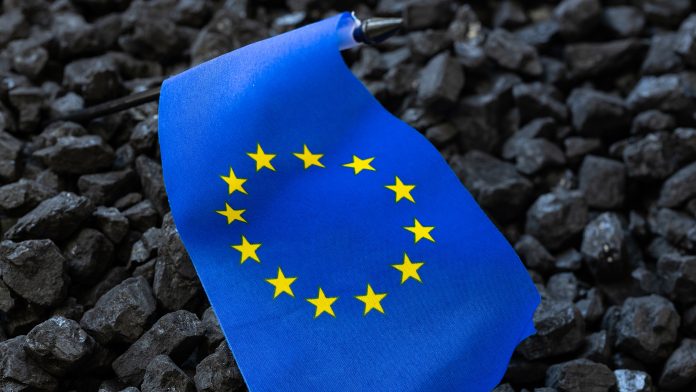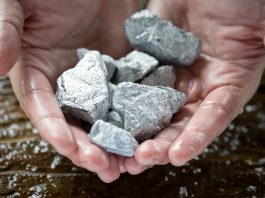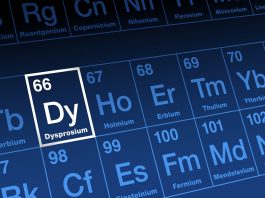Innovation News Network highlights the importance of the EU’s Critical Raw Materials Act, and explains how a rare earth supply chain will be created by addressing three key issues.
Europe is at the forefront of the movement to secure a sustainable rare earth supply chain. Through their Raw Materials Initiative, the European Commission has enacted sweeping initiatives that are designed to minimise environmental damage, encourage innovation, and ensure global access to essential raw materials.
The EU’s Critical Raw Materials Act is an important part of this plan, as it seeks to strengthen Europe’s internal market for strategically important resources and promote fair competition in the global marketplace. This article will explore how the Critical Raw Materials Act helps create a sustainable rare earth supply chain by addressing three key issues: resource security and availability; responsible sourcing and extraction; and circular economy principles.
The importance of rare earth elements cannot be overstated; they are vital components used in many everyday products such as smartphones, flat-screen TVs, computers, and electric cars. As demand increases, so does pressure on existing supplies of these valuable minerals from both inside and outside Europe. In order to ensure a steady flow of necessary raw materials for industries across Europe, governments must take steps toward creating a more reliable supply chain – one which places sustainability at its core.
Sustainability is not only an ethical imperative but also an economic necessity – ensuring access to clean energy sources while simultaneously protecting our environment requires innovative strategies with long-term vision. It is within this context that we can assess the importance of the EU’s Critical Raw Materials Act – what measures have been implemented? What challenges still remain? And how will they help build a truly sustainable rare earth supply chain?
What are rare earth elements?
Rare earths are a group of elements that comprise mostly metals and minerals. They consist primarily of seventeen lanthanides, as well as actinides such as uranium and thorium. These rare earths can be found in abundance in many parts of the world, but they are not evenly distributed geographically. Although they were once used only for specialised applications due to their scarcity, modern technology has made them more widely available.
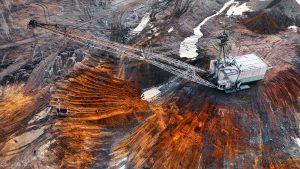
The properties of these materials make them attractive for use in various industries, from electronics to energy production. For example, neodymium is used to make powerful magnets for wind turbines and electric vehicles; dysprosium is employed for its ability to withstand high temperatures; praseodymium-doped ceramics have been used in lasers; and yttrium oxide is employed in fluorescent lighting.
Despite their widespread availability, however, the extraction and processing of these resources remain inefficient and put a strain on our global environment. This highlights the need for a comprehensive regulatory framework that can ensure efficient supply chain management while still promoting sustainability.
The EU’s Critical Raw Materials Act aims to do just this by providing clear guidelines on how rare earth elements should be responsibly sourced and managed within the European Union.
Overview of the EU’s Critical Raw Materials Act
The EU Critical Raw Materials Act seeks to ensure that key stakeholders, such as governments, businesses, and civil society organisations, are held accountable for responsible mining practices. It also aims to promote international trade of rare earth metals and create an environment conducive to technological innovations in the sector.
When it comes to providing a sustainable source of rare earths, there are several elements within the EU Critical Raw Materials Act that come into play. Firstly, it outlines objectives that involve increasing the security of supply by improving access to raw materials from non-EU countries through international cooperation agreements. Secondly, it establishes measures aimed at promoting environmental sustainability and reducing negative externalities associated with resource extraction activities. Finally, it provides incentives for local communities affected by resource exploitation activities through social responsibility schemes.
The introduction of this Act serves as an important step towards ensuring secure access to valuable resources while minimising their impacts on the environment. However, its success depends largely on how well these principles are implemented in practice and if they remain consistent over time.
To facilitate this process, regular monitoring is essential both domestically and internationally so that any deviations can be identified early on and addressed accordingly. This will help guarantee that Europe remains competitive in terms of global production technologies while remaining committed to protecting natural resources as part of a long-term strategy for economic growth and development.
What are the benefits of the Act?
The European Union’s Raw Materials Act is expected to bring about a number of benefits for the sustainable development of rare earth supply chains. The Act provides an effective framework of regulations that will help ensure both efficient production and rational consumption of these resources within the EU.
One key benefit is that it strengthens the governance structure related to managing raw materials, thus making it easier to track their availability and usage while also improving transparency in trading practices. This can lead to more secure access to rare earths and more reliable supplies going forward. Additionally, by encouraging greater efficiency and reduced wastefulness during extraction processes, this legislation could result in lower costs associated with resource acquisition over time.

Furthermore, through its focus on sustainability principles such as circularity and reuse, the Act encourages manufacturers to develop innovative technologies that are better able to extract maximum value from existing resources without compromising quality or safety standards. In turn, this may reduce demand for new material inputs as well as promote a shift towards renewable energy sources which further contributes to long-term environmental protection objectives.
By addressing both supply-side issues and end-user demands, the implementation of this law has the potential to greatly improve the security of rare earth supply chains in Europe – ultimately leading to increased economic growth opportunities across many sectors in addition to improved social welfare outcomes for citizens throughout the region.
Challenges with the rare earth supply chain
Rare earths are a vital component of many products, however, due to their limited availability in certain regions of the world, they can be difficult to source reliably. This has led to challenges with the rare earth supply chain that impede its sustainability.
One challenge is the high cost associated with obtaining rare earth materials. Many countries have imposed export restrictions on these resources, making them expensive and scarce in some parts of the world. Additionally, processing raw material into usable components requires significant energy input which further increases costs for manufacturers. As a result, companies struggle to keep up with fluctuating prices and unpredictable sources of rare earths, leading to difficulties in integrating these elements into production schedules.
Another obstacle to creating a sustainable rare earth supply chain involves environmental concerns related to extracting and refining these minerals. The mining process often leads to large-scale destruction of land or water resources as well as hazardous waste creation that may pollute air or soil quality in surrounding areas.
Furthermore, some countries have inadequate regulations around mining operations resulting in unsafe working conditions and increased risk of contamination. These issues make it more challenging for businesses to procure ethically sourced rare earth materials without negatively impacting local communities or ecosystems.
Creating an efficient yet sustainable rare earth supply chain will require concerted efforts from all stakeholders including governments, industry players, NGOs, and citizens alike who must collaborate towards solutions such as improved regulation enforcement and clean extraction methods that limit environmental damage while still meeting global demand for these essential elements.
Strategies for sustainable supply chain development
Responsible mining practices are essential for creating a sustainable rare earth supply chain as they ensure that resources are managed responsibly. Governments must be involved in regulating the industry to ensure safety standards are met and that companies do not engage in unethical or destructive activities such as illegal trading of minerals or dumping hazardous waste materials into local waterways.
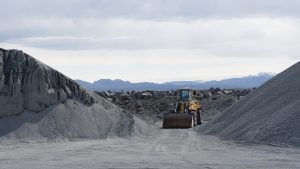
International trade agreements should also be put in place to protect both producers and consumers from exploitation by large corporations. Additionally, research should be conducted into new methods of extraction and refining so that more efficient processes can be implemented which reduce resource wastage while still providing quality products.
Technological innovations offer another strategy for achieving a sustainable rare earth supply chain. Advanced technologies such as remote sensing, advanced analytics, and Machine Learning can be used to increase efficiency within the production process while reducing costs associated with labour and transportation expenses.
Furthermore, advances in data collection could improve transparency throughout the value chain by providing better visibility of raw material sources, production processes, and end-product destinations. These technological advancements will lead to increased accuracy when calculating the true cost of goods sold thus helping governments make informed decisions regarding taxation policies on imported items.
Finally, there needs to be a greater focus on understanding the economic impact of implementing sustainability initiatives within the rare earth sector. Companies should consider offering incentives such as tax credits or reduced tariffs on imports from countries that demonstrate good stewardship over natural resources through careful management plans and rigorous enforcement protocols. Moreover, public-private partnerships should aim to drive investments into renewable energy projects which benefit both people living close to mines as well as those further downstream who rely on access to clean water supplies for their livelihoods.
By taking all these factors into consideration when developing strategies for creating a sustainable rare earth supply chain, governments across Europe will have access to tools needed for mitigating risk related to resource scarcity while simultaneously reaping rewards from improved environmental outcomes due to responsible sourcing practices being employed throughout the region’s mineral sectors.
Ultimately then, effective implementation of objectives outlined under the EU’s Critical Raw Materials Act could help establish an ethical framework that governs international trade operations, including for commodities such as rare earth elements.
Regulations to monitor production and consumption
The European Union’s Critical Raw Materials Act is designed to help create a sustainable rare earth supply chain. Monitoring regulations are necessary for ensuring that the production and consumption of rare earths occur in an environmentally friendly manner.
Production regulations can be used to control the mining, extraction, and processing of rare earths. For example, these regulations could include limits on how much ore can be mined from each quarry or mine site, as well as environmental standards for waste disposal. Production regulations should also ensure that workers have safe working conditions and access to protective equipment when handling hazardous materials.
Along with controlling production, it is important to monitor the amount of rare earths being consumed around the world. Consumption regulations would set limits on how much material can be imported or exported between countries with regard to international trade agreements. It would also involve tracking where the raw materials come from, who they go to, and what they are used for at their end destination. This data collection helps inform policymakers about which areas need more resources so that production can remain sustainable over time.
Effective monitoring requires detailed records of all activities related to the acquisition and use of rare earths throughout the entire supply chain – from source to end user. By collecting this information through comprehensive regulation systems, governments can take action toward creating a secure and reliable global market for rare earths while promoting sustainable production and consumption practices.
Exploration and production processes required
To create a rare earth supply chain, it is essential to understand the exploration and production processes required for mining these materials.
To illustrate: imagine we are building a bridge over an abyss – this bridge will be safe if each component of its structure has been properly tested and reinforced; similarly, in the development of any raw material supply chain, every stage of the process must meet certain standards in order for it to be truly sustainable.
It is important to bear in mind that while many countries have established regulatory frameworks standardising mineral potentials and related activities, not all stakeholders adhere strictly to these guidelines. Therefore, responsible sourcing policies need to consider not only compliance with local legislation but also adherence by actual miners and producers on site. For instance, audits can help ensure that adequate safety measures are being enforced along with regular environmental testing procedures.
Establishing a secure supply chain for rare earth resources requires careful planning and effective implementation of both exploration and production processes – something that the EU’s Critical Raw Materials Act seeks to address through comprehensive regulation across multiple sectors. By creating consistent rules governing resource management from source-to-end user industries, this Act helps promote sustainability within the entire rare earth value chain.
Economic impact on developing countries
The implementation of the European Union’s Critical Raw Materials Act has caused considerable changes to global markets, particularly impacting developing countries that rely on mining and export regulations in order to sustain their economies. As such, it is essential to consider how this new Act will affect not only the economic stability of these nations but also the development of sustainable rare earth supply chains.

One major consequence for many of these countries is a shift away from relying solely on raw materials as an income source. Rather than having unrestricted access to international markets, trade policies will now be subject to scrutiny by the EU in regard to sustainability and fair pricing practices.
This could lead to price fluctuations depending on which resources are deemed necessary or valuable due to diminishing reserve levels, as well as creating potential disruption within certain sectors if exports are restricted or limited.
Furthermore, any unforeseen political ramifications may further complicate matters for those trying to create a stable rare earth supply chain.
In response, governments must take measures towards providing more secure sources of income while encouraging investment into other industries that can provide long-term returns despite fluctuating prices in commodities like rare earths.
Additionally, they should strive towards implementing transparent regulations around taxation and royalties so that both foreign investors and local companies benefit equally when sourcing minerals from abroad – allowing them to better predict incoming revenue streams while mitigating risk associated with market volatility.
Environmental benefits of responsible mining practices
Recent estimates suggest that the global rare earths market is expected to reach $11.5bn by 2027, an increase of 3.2% per year from 2021-2027. Such a growth in demand will require a sustained effort towards responsible mining practices to ensure environmental benefits are maximised while safeguarding investors’ opportunities and technological innovations.
The EU’s Critical Raw Materials Act seeks to create a sustainable supply chain for rare earth materials by promoting international trade with reliable partners and encouraging responsible mining practices.
The Critical Raw Materials Act requires companies engaged in mineral extraction activities to adhere to stringent standards related to health, safety, and environmental protection. This ensures that any impacts on nature or environment resulting from extraction activities are minimised or prevented entirely.
Moreover, the Critical Raw Materials Act emphasises transparency throughout the entire value chain, allowing stakeholders such as governments, investors, end users, and civil society organisations to access information about every step of the production process which helps them make informed decisions when engaging with suppliers.
These efforts have already seen tangible results; recent studies show that properly managed mines can be successful at reducing their ecological footprint while also creating economic benefits through job creation and improved infrastructure.
Furthermore, responsible mining practices encourage investment in more efficient technology which further reduces emissions and waste generation.
These positive outcomes demonstrate how effective policymaking can lead to better environmental stewardship without sacrificing long-term financial stability.
Because of the EU’s Critical Raw Materials Act, companies must now comply with strict regulations designed specifically for protecting both human health and natural resources while providing financiers assurance that their investments are secure. As these initiatives become widespread within the sector, it is clear that investing in responsible mining practices offers numerous environmental benefits whilst presenting numerous opportunities for international traders and investors alike.
Implications of the Act on international trade
The European Union’s Critical Raw Materials Act of 2017 has the potential to create a sustainable rare earth supply chain through development strategies and strict monitoring regulations. This Act is likely to have an effect on international trade as it introduces measures for responsible mining operations with stringent rules for environmental protection, health and safety, labour rights, and corporate responsibility. The main objective of this Act is to ensure that the extraction of raw materials does not negatively impact the environment or society at large.
The implications of this Act are significant in terms of how countries will manage their resources in order to guarantee the security of supply while maintaining responsible practices. As such, countries may need to develop strategic plans for diversifying their sourcing base and increasing access to rare earths from other parts of the world.
Additionally, they must consider developing domestic sources where possible by investing in research and technology related to production processes that are both efficient and environmentally friendly.
Moreover, this Act could also lead to more effective regulation of global markets which would include ensuring fair prices for suppliers and buyers alike. Furthermore, it could help improve market transparency by providing information about pricing trends so that governments can better monitor their economies and anticipate fluctuations within them. It is evident then that the EU’s Critical Raw Materials Act could be a beneficial tool for creating a sustainable rare earth supply chain if its implementation is monitored carefully by relevant authorities.
Potential alternatives to rare earth metals
The search for a sustainable supply of rare earth metals is leading many to seek out alternatives that can provide the same level of performance and efficiency. As we look toward a greener future, these potential substitutes offer an exciting opportunity to reduce our dependence on rare earths.
From synthetic materials synthesised in laboratories to naturally occurring minerals mined from the ground, there are plenty of options available when it comes to finding alternatives to rare earths.
Synthetic materials such as graphite or carbon nanotubes have been found to be effective replacements for certain applications, while using natural minerals like tin and aluminium may also help us meet our needs. These alternative resources tend to have lower energy requirements during production than traditional rare earth elements do, making them more cost-effective and environmentally friendly.
Additionally, some green alternatives such as recycled plastic or paper products may even outperform their rare earth counterparts in terms of durability and longevity.
Discovering new sources of inexpensive substitutes with low environmental impact promises to lead us toward a cleaner and more efficient way of producing essential raw materials. By exploring all possible options – both renewable and non-renewable – we can create innovative solutions that will benefit society now and into the future by reducing reliance on scarce resources while simultaneously increasing energy efficiency.
The Critical Raw Materials Act: Opportunities and risks for investors
The EU’s Critical Raw Materials Act aims to reduce dependence on imported raw materials, increase economic growth, and create environmental benefits by encouraging international trade. This could lead to increased investment opportunities such as new market entrants or expansion of existing markets.
However, there are risks associated with investing in this sector due to volatile global demand and uncertain prices for rare earths.
Investors must assess their own risk tolerance when considering investments related to the EU’s Critical Raw Materials Act. As regulations governing access to these resources may vary between countries, it is important for investors to ensure that their activities comply with local laws and regulations.
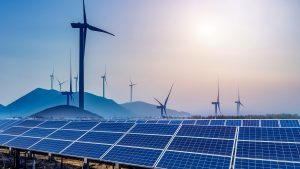
Furthermore, investor awareness of geopolitical developments will be key in mitigating investment-related risks before they arise.
Technological innovations in the supply chain
According to recent data, the renewable energy sector is projected to be the primary consumer of rare earths by 2035. This means that there will need to be an increase in research and development when it comes to optimising mining practices, production processes, consumption monitoring, international trade, and investor opportunities related to these materials.
In order to ensure sustainability within the rare earth technology supply chain, innovative approaches have been implemented such as digital traceability technologies for tracking provenance from ore extraction through processing stages till final use in products.
Additionally, 3D printing can enable more efficient production methods with less waste than traditional manufacturing processes.
Finally, AI-powered analytics are being used to measure resource flow patterns between countries and optimise inventory management along the entire value chain.
These developments demonstrate a commitment to creating a future where rare earths are responsibly managed while providing investors with lucrative returns on investment. In turn, these efforts lead toward environmental protection goals as well as increased economic growth potential across multiple sectors while showcasing a long-term outlook for sustainability in the global market.
Future outlook for a sustainable rare earth supply chain
The European Union’s Critical Raw Materials Act, adopted in 2019, seeks to create a sustainable rare earth supply chain. This Act was designed to ensure responsible mining practices and international trade implications related to rare earth metals. Under this Act, companies that extract these materials must adhere to strict regulations regarding their use of resources, forcing them to be mindful of the environment while also protecting workers’ rights.
In addition, the EU Critical Raw Materials Act encourages technological innovations within the supply chain by introducing incentives for companies to develop alternatives to rare earth minerals which are often more environmentally friendly. These new technologies have the potential to reduce the economic impact on developing countries where much of these minerals can be found as miners will no longer need access to deep deposits or utilise hazardous chemicals in extraction processes. As such, these innovations could lead to an increase in employment opportunities and wages for local communities.
This shift towards sustainability is likely to cause disruption in global markets due to rising costs of production from industries heavily reliant on rare earths but with time it should result in a cleaner and more equitable approach towards mineral usage with positive effects being felt across multiple sectors including automotive and electronics manufacturing as well as renewable energy generation. Thus, the future outlook for a sustainable rare earth supply chain appears promising.
Overall, the EU’s Critical Raw Materials Act has been designed to create a secure and sustainable source of rare earth metals while mitigating potential negative economic and environmental consequences. As such, it presents a unique opportunity for Member States to strengthen their domestic industries while reducing global dependency on finite resources.

